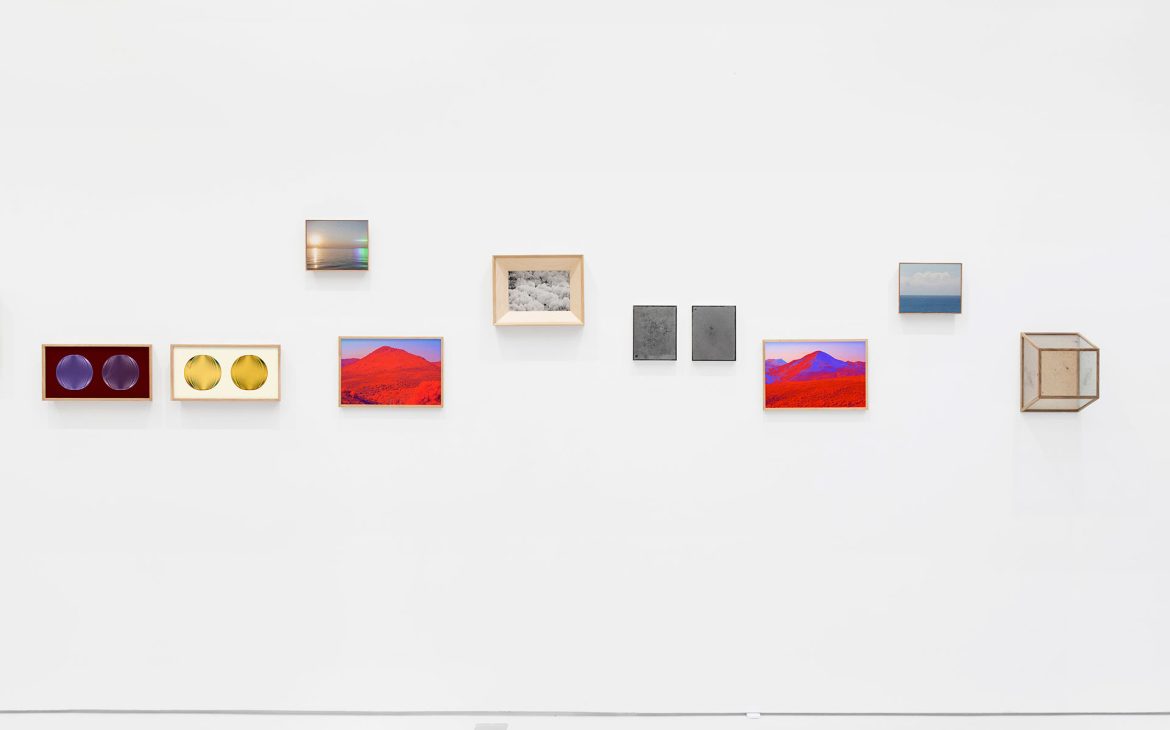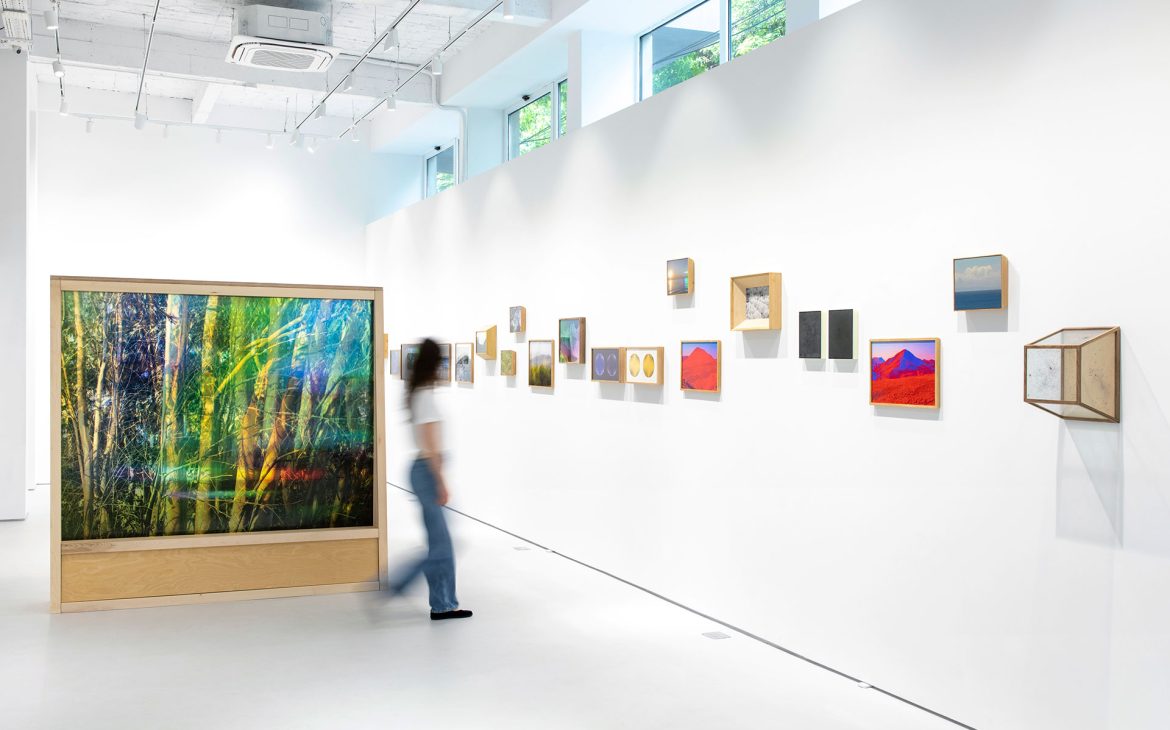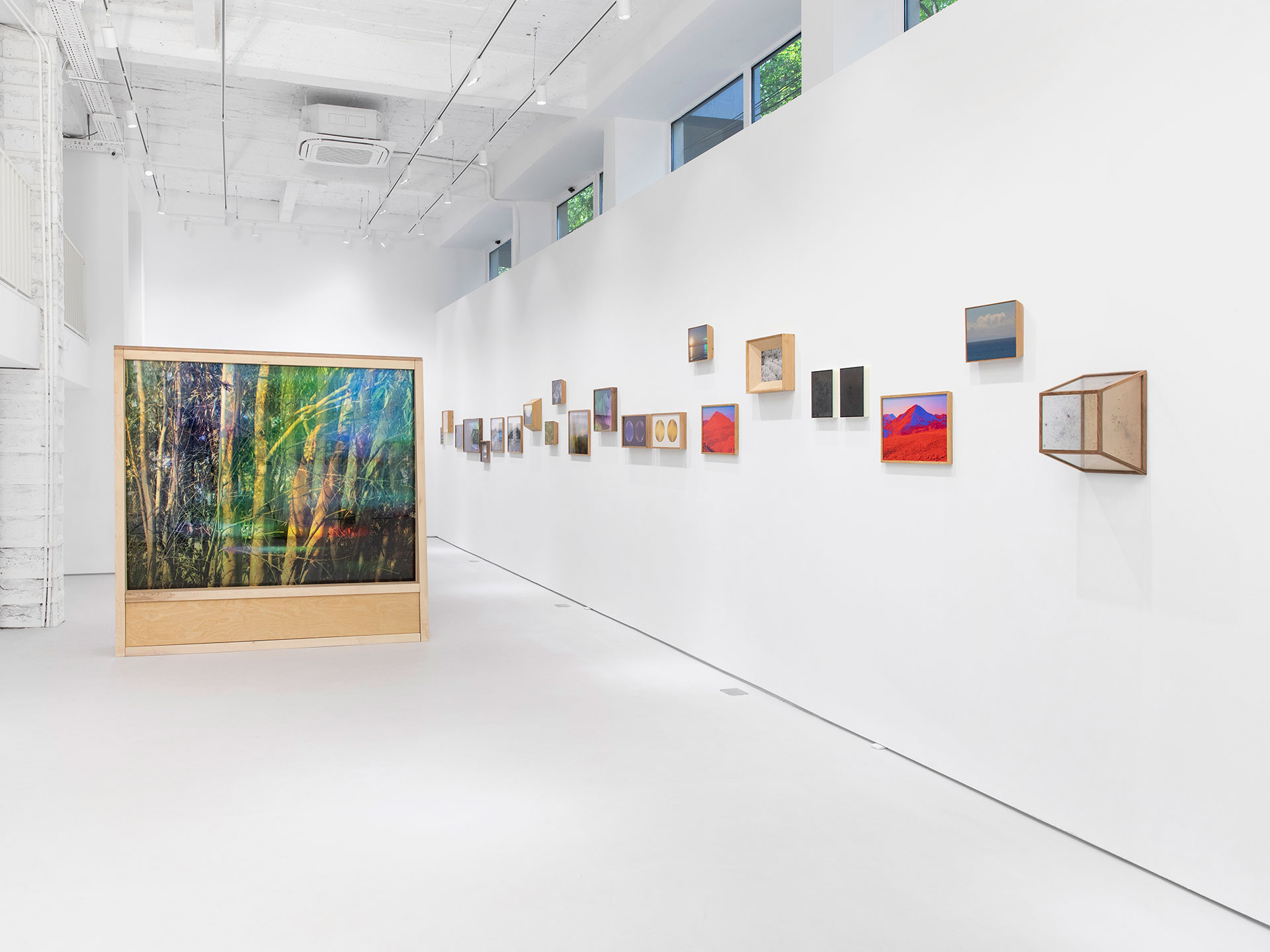GAEP presented Mihai Plătică’s solo exhibition: Oh, Be a Fine Girl/Guy, Kiss Me!, featuring nearly 40 new works tracing a journey of light, from reflected light on mirror landscapes to infrared and ultraviolet, captured through full-spectrum photography.
Plătică’s constant intent to examine both the beauty and complexity of the surrounding world is evident in the new works, which blend scientific knowledge and artistic interpretation in an effort to make the invisible visible. This marks the artist’s second solo exhibition at Gaep.
Mihai Plătică constructs his exhibition based on the story of the “Harvard Computers” – mathematically gifted women, passionate star observers, and later, physics and astronomy graduates, all of whom were employed to study the Harvard Observatory’s collection of glass photographic plates starting in the 1880s. Their diligent work of examining, comparing, classifying, and cataloging millions of stars photographed on glass plates provided us with the first complete picture of the visible universe. Approximately 200 women worked at the Harvard Observatory over the course of a century. Its entire collection now comprises over 550,000 glass plate negatives and spectral images.
The title Oh, Be a Fine Girl/Guy, Kiss Me! represents the mnemonic used to remember the OBAFGKM star classification system, created by Annie Jump Cannon in the late 19th to early 20th centuries and still used by astronomers. Through the title and a series of works in the exhibition based on the now-digitized collection of glass photographic plates, Mihai Plătică directly pays homage to the early Harvard astronomers.
The nearly 40 works can be grouped into five areas of interest: spectroscopy, birefringence, full-spectrum photography, photoelasticity, and mirror landscapes. Light is, in fact, the common thread of the exhibition. After setting the stage with images of the sky from a hundred years ago, Plătică takes us on a thematic journey: light is broken down into its component colors using a diffraction grating (spectroscopy) or into two refracted rays using a transparent calcite (birefringence/double refraction); the entire spectrum of light, from infrared to ultraviolet, is captured by the camera (full-spectrum photography); polarized light helps observe stress states in photoelastic materials subjected to strain (photoelasticity); light is reflected off landscapes that function like mirrors.
A spirit of exploration characterizes this new body of work. For many of them, continuing to photograph with film cameras and old digital cameras, the artist used additional instruments such as pieces of optical calcite, diffraction gratings, filters for infrared and ultraviolet spectra. Just as the early Harvard astronomers leveraged photography inventions to enhance their data collection, Plătică experiments with various optical instruments to make the invisible visible. At other times, he draws inspiration from science fiction literature: from Bob Shaw’s short story Light of Other Days, he borrows the idea of a “slow glass,” through which light takes a year to pass, to create a large object that compartmentalizes the exhibition space.
Through photographs and objects, Oh, Be a Fine Girl/Guy, Kiss Me! embodies a methodical approach to broadening perspectives beyond what the naked eye sees and curiosity beyond what is familiar.
Mihai Plătică (born 1983) graduated in Photography from the University of Art and Design in Cluj-Napoca, the city where he continues to live and work. He participated in the duo exhibition Suddenly Clear (with Diana Popuț) at the Art Museum of Cluj-Napoca (2021) and in Departures From the Sphere, a group exhibition held in three different cities as part of the European co-production project Both Ways, part of the EuroScience Open Forum (ESOF2020, Trieste). His first solo exhibition at Gaep was Alpher-Bethe-Gamow (2021). Focused on photography and object/sculpture, Plătică’s practice is rooted in his interest in scientific theories, the nature of materiality, and the history of body representation.









